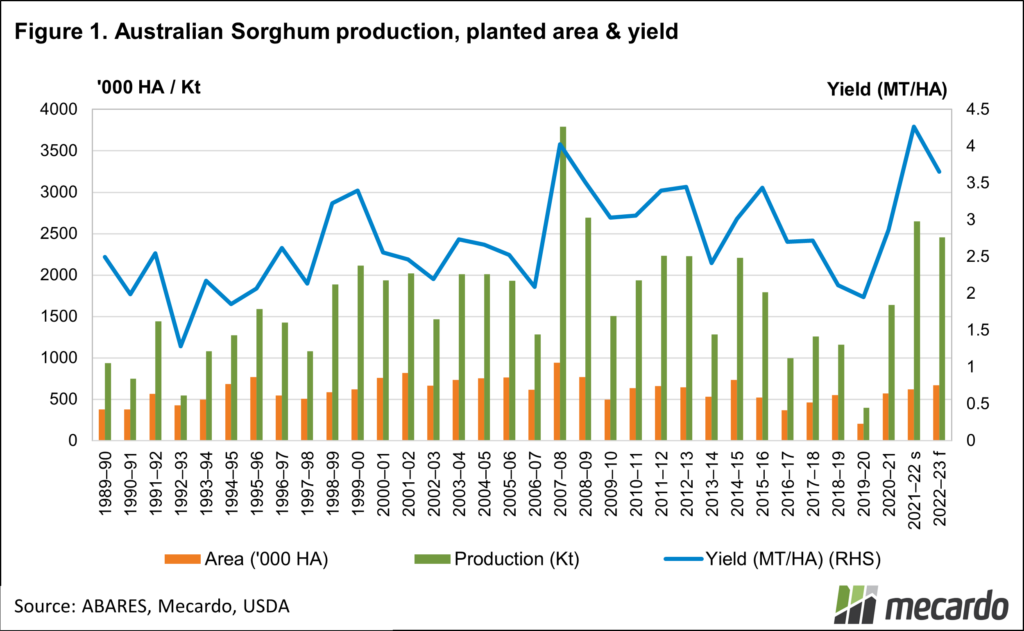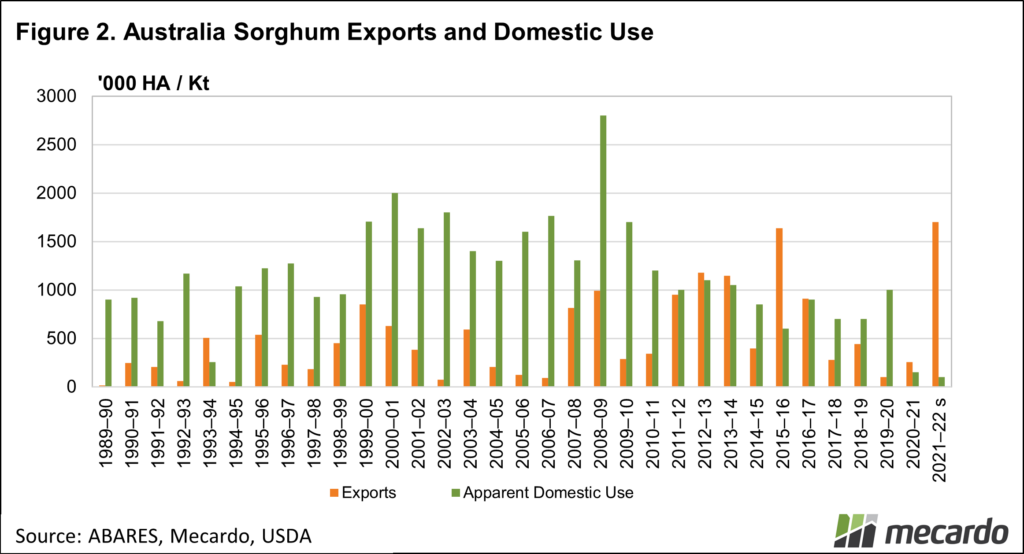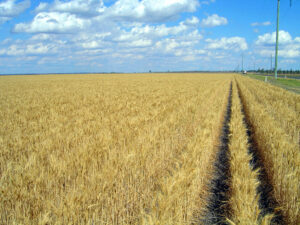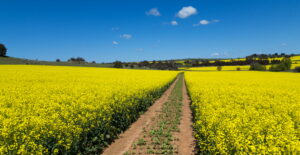The Australian Bureau of Agricultural and Resource Economics and Sciences (ABARES) March Crop Report gave us our first solid look at how the summer cropping season went for northern producers. Sorghum is by far the majority crop, and interestingly, most is being exported these days.
The sorghum crop is almost exclusively produced in New South Wales and Queensland. The strength of the acreage and yield relies on the northern summer rains, and for the second year in a row, conditions have been favourable for the most part.
Last year Australia produced its largest-ever sorghum crop, with 2.64 million tonnes harvested, at an average yield of 4.2t/ha.
This year growing conditions were not as optimal as the previous year with a 14% decline in yield offsetting the 8% increase in acreage sown. Figure 1 shows the 2.45 million tonnes expected to be produced this year will be the fourth-highest on record, and the third-highest achieved yield.
We can also see in figure 1 that sorghum plantings are highly variable. In 2019-20 just 204,000 hectares were sown to sorghum, and this number nearly tripled in 2020-21. Unlike winter crops, which are often sown regardless of the timing of rains, in a dry year sorghum crops may not be sown at all. In a good year, the opportunity to summer crop will be jumped on.
The domestic use of sorghum as a livestock feed has declined in recent years. Figure 2 shows that big crops used to see lots of sorghum used domestically, along with an increase in exports. Domestic use has declined, and we have seen big export years in 2015-16 and 2021-22.
The large domestic use in 2019-20 was driven by a small winter crop and the demand for feed grain locally. The very small domestic use, and large exports, in 2021-22 were likely a result of the Chinese tariffs on Australian barley. There were no such issues with sorghum, and around $726 million dollars worth of sorghum was exported in 2021-22.
What does it mean?
The big sorghum crop this year adds to Australia’s exportable grain surplus, which was already at a record from the winter crop. Like cereals, sorghum prices are being supported by international factors in the face of strong supply. The southern Queensland prices for sorghum are still above $400/t, which is historically very strong.
Have any questions or comments?
Key Points
- The sorghum crop is on track to be large, but down on last year’s record crop.
- Increased plantings have been offset by weaker yields.
- Sorghum exports have increased with strong demand, and domestic use has decreased.
Click on figure to expand
Click on figure to expand
Data sources: ABARES, Mecardo














